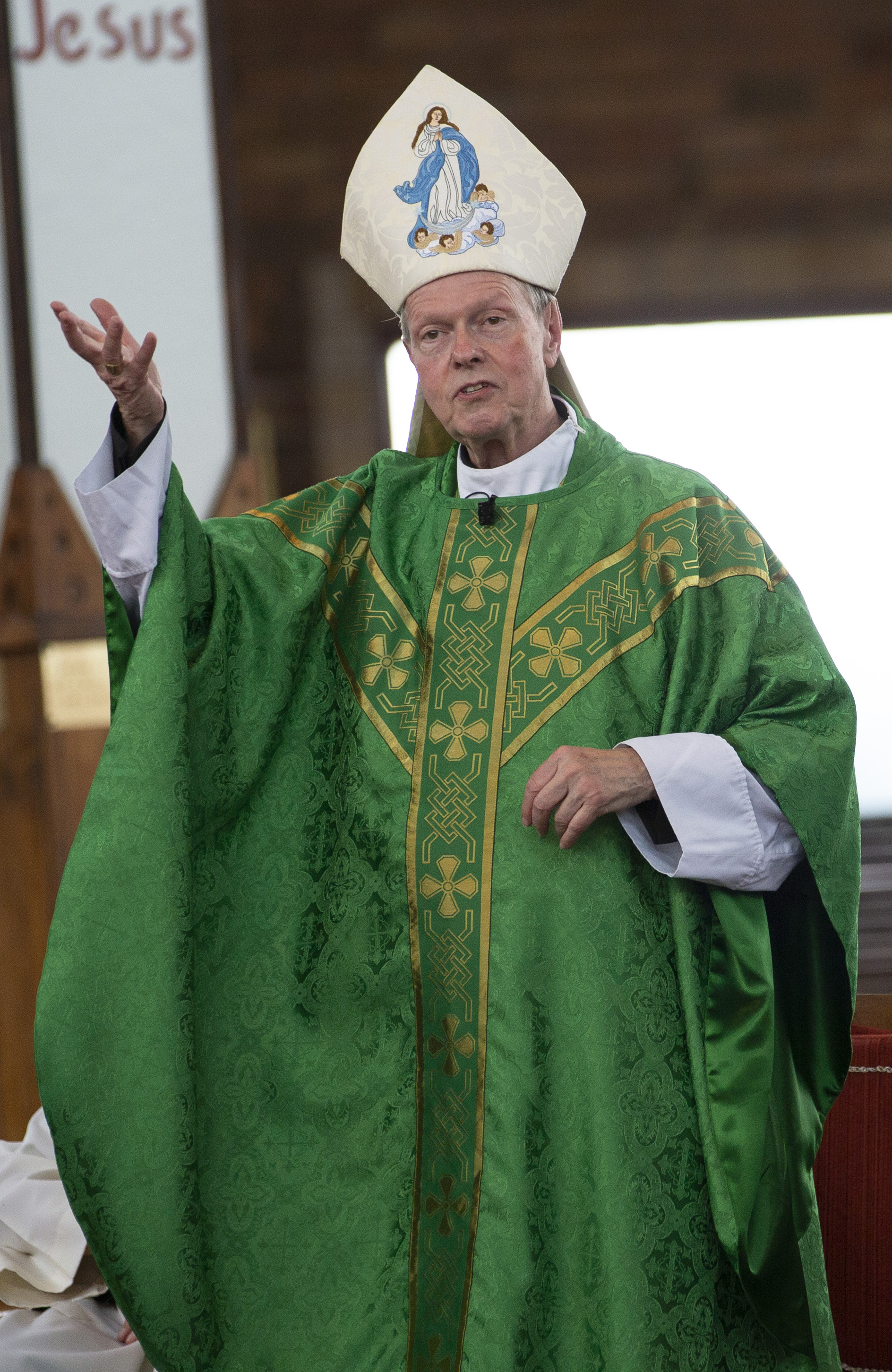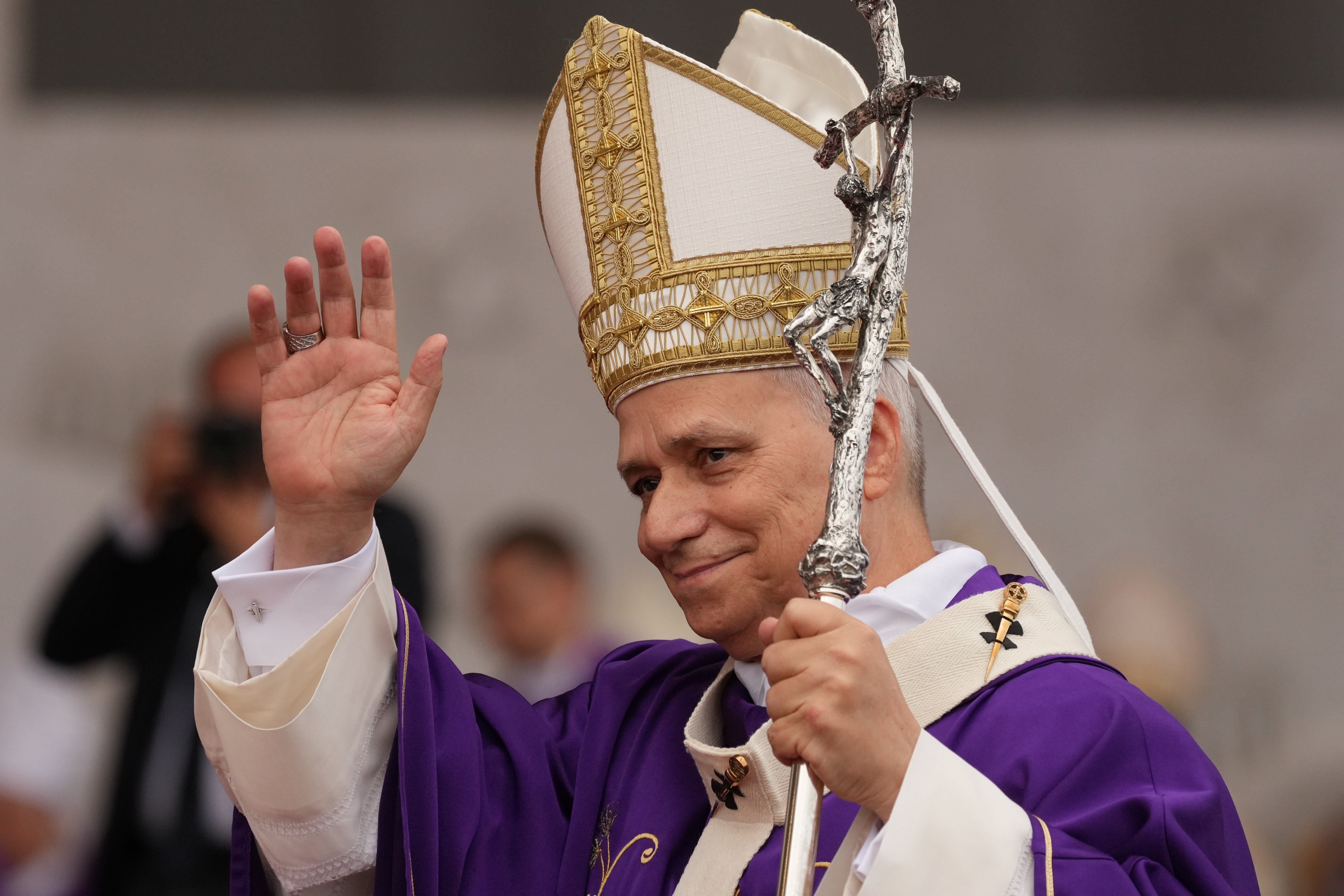December 14, 2021 at 5:59 p.m.
God has a face!
Children, no doubt, take this for granted. Ask any group of 5-year-olds to draw God. No problem. Depending on how many crayons are on hand, you will likely be treated to any number of JibJabs of God in a house, colorfully clothed, with a dog and a garden. Remarkably, God will look like and live like people the children know and love.
Even among adults, the images we have of God are often rooted in memories of people in our lives who taught us about God or assumed God-like roles. Bernhard Häring, the renowned Redemptorist theologian, of whom I was a student, once told me that Erich Fromm, who wrote the ever popular “The Art of Loving” had great difficulty finding faith in God. Apparently, his grandfather was a stern and fearsome taskmaster. Whenever he tried to conjure up an image of God he could only imagine his grandfather sitting on the throne.
Jesus referred to God as his “Father,” and even taught us to pray to God as “Our” Father. For many reasons some seriously recoil from thinking of God as “father.” They may point to the history of patriarchy in the Hebrew scriptures, finding it offensively anthropomorphic to even envision God as a figure with sex or gender, as the polytheistic Greek and Roman mythology. If someone suffered trauma from abusive parental figures in their life — male and/or female — thinking of God in paternal or maternal terms could well trigger painful memories.
Our own Catholic Faith is clear that God’s divine nature is neither male nor female and any gender attributes are metaphorical. Nonetheless, Jesus himself, the Second Person of the Blessed Trinity, represents an Incarnation of divinity in a fully human nature. Therefore, from the moment of his conception, he had a uniquely human DNA, X and Y chromosomes, and, as he developed in his mother’s womb, grew into a form that was identifiably male. And he would have, like every human being, a face, a human nature.
In that sense, we can say not only that Jesus “had” a face but that he HAS a face. Jesus lived and died. The testimony of the scriptures is that he was one like us in all things but sin (cf. Heb. 4:15). Every essential component of a human being, Jesus had. Even more, he still has. The narrative of the life of Jesus does not end with his death. He rose from the dead and was visible after his resurrection to many disciples in some form that, though different, could be seen and touched. Theologians speak of a “glorified body.” The point is that the identity of the historical Jesus with the Jesus whom those who experienced him after death testify to seeing is one and the same. The Jesus conceived and born of the Virgin Mary, who was crucified, died and was buried, rose on the third day and ascended into heaven is one and the same.
If this is so, then Jesus lives in his body and still has a face. He did not discard his humanity, cease being Jesus, and go back to being only the Second Person of the Blessed Trinity. The bond between his divinity and his humanity persists and, therefore, the marriage of divinity and humanity remains, however mysterious and incomprehensible.
One way in which this union can be experienced is in the graced relationships among disciples of Christ, united with him and one another in the mystery of the Church. St. Paul speaks eloquently of this mystery using metaphors, that of the human body and its members, and of the union in marriage between husband and wife. He speaks of the Holy Spirit living in disciples, each a member of the mystical Body of Christ. We are joined to Christ and one another in the communion of saints, that also includes those who have gone before us, marked with the sign of faith. The union of all believers does not cease with physical death but endures.
Sometimes I have heard people describe an experience of seeing the “face of Christ” in other persons. Many saintly people have written about seeing God in the poor or in persons with disabilities, those in the margins of society who are often neglected or cast aside. During my recent pilgrimage to the slums of Mexico City, I had an encounter with some very remarkable people who had been transformed from the most destitute of circumstances to become radiant with a hope and joy I can only describe as angelic.
On second thought, it is purely and perfectly human, the inner glow that radiates on their faces, so much so that it could well be called the “face of God.” One can see in them what those who believe in Jesus would see on his face. I know that I am speaking here of a somewhat mystical sounding faith experience. Many of us have had the sense of being in the presence of a holy person, someone touched by God. I will go out on a limb to suggest that such experiences may be more common than we ordinarily acknowledge, if we have the boldness to admit it.
To be sure, Satan is very much on the prowl in our times to attempt to disfigure the face of God in our humanity. So many examples of the ugliness to which human beings can descend are found in news reported to us. It is easy to sour on humanity and to become discouraged with those who fall into the depths of sin and evil. We all struggle with temptation and failure. Yet we are surrounded by grace, caught up in the sea of God’s redemptive love in the person of Jesus Christ who is alive in our midst and burning with the desire to show us his face in the lives of those who are pure of heart, and ready to be instruments, channels of God’s peace.
Christmas is many things to many people. In its original and purest sense, it is about God coming to us in the humblest and gentlest of ways, born as a child into a cold and hostile world, recognized by the lowliest members of society, the shepherds and the truly wise, and hailed by angels. In the gift of discipleship, offered to those who accept baptism and the indwelling of the Holy Spirit, Christmas becomes a time to allow Jesus to be born again in our hearts, to re-present him to the world in and through us.
Our own lives can radiate his loving presence in our words, our gestures and on our faces. What God can do in and through us knows no bounds, as Mary’s Magnificat powerfully proclaims. The face of God is more than a symbol or metaphor. It is also something that can shine in our own eyes and be heard in our words, felt in our actions. We are a part of something wonderful, larger than ourselves, caught up in an eternal Presence that lifts us up to unimaginable heights. We are, after all, citizens of heaven. Even if it takes some imagination to envision how that looks on earth, we can certainly give it a try. The saints did. And so we are called to be.
- ‘Be open to what the Lord has in store for you,’ Pope Leo tells SEEK 2026 attendees
- Become a member of the Magi
- Full text: Pope Leo XIV Angelus address on Jan. 1, 2026
- Full text: Pope Leo’s homily on Jan. 1, the feast of Mary, Mother of God
- New year marks time to usher in era of peace, friendship among all people, pope says
- Pope Leo mourns tragic New Year fire in ski resort bar; 40 presumed dead
- ‘Hope does not disappoint:’ A Jubilee for the history books
- God’s plan of salvation greater than today’s ‘weaponized strategies,’ pope says
- Take time to review the past year with God, Pope Leo suggests
- Missionary on the move: Where Pope Leo XIV might travel next in 2026








Comments:
You must login to comment.